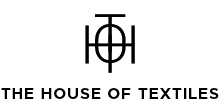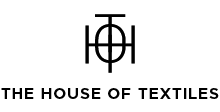Explore the Beauty of Quilted Fabric: Benefits and Uses
Quilted fabric has long been an adored fabric because of its unique criss-cross design. It is constructed by stitching together layers of fabric with a lining of soft material. This makes it ideal for a wide range of items, including blankets, home goods, and clothing. Since ancient times, people have been creating quilted cloth, and it has undergone numerous changes to meet various requirements.

What is Quilted Fabric?
The structure of the quilted fabric is quite straightforward. It is made up of three layers: one layer of fabric, one layer of fleece or cotton wool, and one more layer of fabric. The renowned diamond grid that appears on quilted textiles is created by stitching the layers of material together at regular intervals. Vertical lines or designs can also be found in quilted fabrics. One example of this is the boutis fabric, which is created by stitching two fabrics together in a specific pattern.
Materials used to cover fleece, cotton, or wool might be plain or printed. In addition, the fabric is well recognized for its ability to retain heat and act as an insulator, depending on the weight and thickness of the cotton wool used.
The History of Quilts
Quilts have their roots in the Middle Ages and have developed into a popular craft. In the past, people created quilts to commemorate special occasions or to record social history. Many of them relate tales about the people who created them and their communities.
Quilts have been treasured as family treasures for decades, going back to the earliest examples. They were frequently created together by family members, which solidifies their status as a remembrance of the past.
Over the ages, quilting has evolved and has the ability to capture historical cultural trends. Quilting history is filled with tales of ingenuity, tenacity, and even revolt. For instance, during the Civil War, patchwork codes were employed as a means of communication.
Today, quilting remains a beloved activity and an expression of creativity.
The Art of Quilt Making
If you've ever been in awe of a quilt's elaborate designs, you should understand that quilt-making is an actual art form. The exquisite patterns and designs that give each quilt its own identity are made using quilting techniques. Quilters invest their knowledge and time into their work; a single piece may take them months to finish.
Decorative stitching gives the finished quilt a lovely, artistic touch, and is an indispensable aspect of quilt manufacturing. The complex stitching that give the quilt its life need a high skill level. Every stitch, whether it be cross- or running-stitch, helps to create a piece of art that appeals to the senses.

The Benefits of Quilted Fabric
The double thickness of quilted cloth offers numerous benefits. Due to its increased thickness, a quilted fabric can withstand wear better than a standard fabric, depending on the fabric used in its construction. The second benefit is that it shrinks very little or not at all. In fact, the cloth is securely held in place by the cotton wool weaving, preventing shrinkage during washing. The fabric also offers excellent insulation and heat maintenance. In fact, the cotton wool strengthens the cloth's insulation by adding a layer between the two layers of fabric.
The fact that quilted cloth resists wind is its final benefit. The likelihood of an opening in the fabric, which lets air through, is greatly decreased by tightly weaving thin threads. Certain quilted materials can withstand rain as well, but if they are very waterproof, they may prevent the body's heat from escaping and cause skin irritation.
What Uses Are There for Quilted Fabric?
There are various uses for quilted fabric:
- Bedding: It's used to create quilts, comforters, bedspreads, and blankets. The fabric is warm and comfortable for a restful night's sleep due to the layers and stitching.
- Clothes: Vests, coats, jackets, and other outdoor attire are made from quilted fabric. It looks fashionable and is ideal for cold weather because of the padding and warmth.
- Furnishings: It is employed for both indoor and outdoor furnishings, such as sofas, chairs, and cushions. It provides more comfort and texture.
- Horse Riding: Saddle cushions, horse blankets, leg wraps, and safety gear are examples of equipment using quilted fabric. It works well to protect and cushion the horses.
- Automobiles: It is utilized inside autos as well as for car boot liners and seat covers in the automotive industry. It is robust, keeps you warm, and is very user-friendly.
- Bags and Accessories: It is utilized in the production of purses, totes, and travel gear. These pieces are made sturdy and fashionable by the quilting, which also gives a unique texture.
- Home Decor: Placemats, table runners, drapes, and other home décor items all feature it. It looks good in your house, maintains warmth, and has lovely designs.
- DIY Projects and Crafts: Quilted cloth is used in a variety of crafts, including wall hangings, pot holders, jewelry, and ornaments. You may be imaginative and customize things because it is available in a variety of hues and designs.











